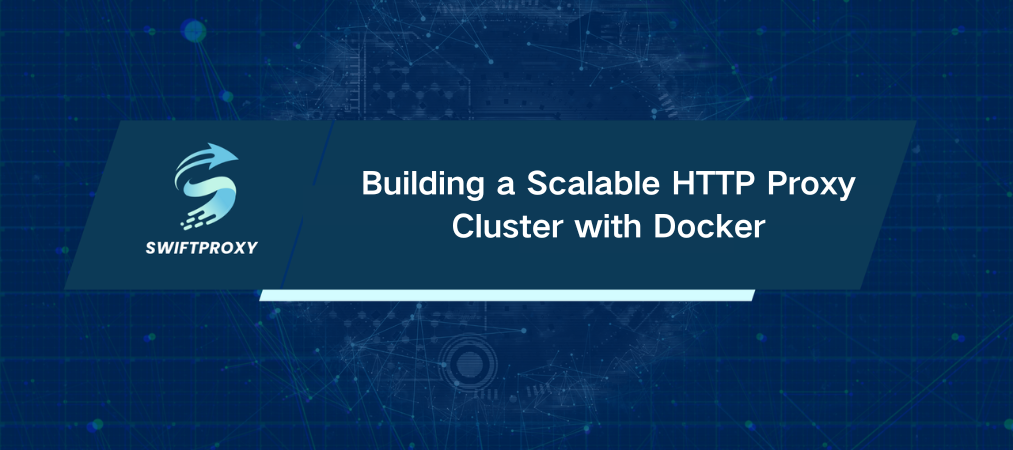Building a Scalable HTTP Proxy Cluster with Docker

Web traffic is not just growing, it is exploding. Handling thousands or even millions of requests every minute without breaking a sweat is the challenge businesses face today. The truth is traditional proxy setups buckle under that kind of pressure. With Docker, you can build a proxy cluster that scales effortlessly, adapts instantly, and runs like clockwork.
Docker isn't just a buzzword. It's a container powerhouse that makes deploying, managing, and scaling proxy servers not only possible but practical. In this guide, we'll walk you through how to deploy a scalable HTTP proxy cluster using Docker. You'll get clear, actionable steps, no fluff—just what you need to get started and stay ahead.
What's an HTTP Proxy Cluster
Think of an HTTP proxy as a middleman between your users and the internet. It routes traffic, balances loads, boosts security, and keeps everything running smoothly. When traffic surges, one proxy won't cut it. You need a cluster—a team of proxy servers working together.
Docker wraps these proxy servers into lightweight containers. Each container runs independently but plays its part in the larger cluster. This setup brings scalability and fault tolerance, all wrapped in an easy-to-manage package.
Why Use Docker for Your Proxy Cluster
Scale Fast and Scale Smart
Traffic spikes are easily managed by quickly spinning up more containers. Tools such as Docker Swarm or Kubernetes handle orchestration automatically, allowing your cluster to grow seamlessly without any manual intervention.
Save Resources and Cut Costs
Containers are lean. Unlike bulky virtual machines, they share resources efficiently. That means lower hardware costs and better performance for every server in your cluster.
Simplify Maintenance
Updates? Just replace the container. No downtime, no fuss. Docker's version control means you always know what's running—and can roll back if something breaks.
Keep It Running
Containers monitor themselves. If one fails, Docker automatically restarts it. Your cluster stays resilient, even under pressure.
Lock Down Security
Container isolation limits security risks. You control network access tightly, keeping data safe as it flows through your proxy servers.
Creating Your Scalable Proxy Cluster
Pick Your Proxy Software
Squid, HAProxy, Nginx—all solid choices. Evaluate based on your needs: speed, security features, and flexibility. For instance, HAProxy shines in load balancing; Squid excels at caching.
Containerize the Proxy
Write a Dockerfile to automate your proxy setup. Include installation, configuration, and any custom tweaks. This file is your blueprint—reusable and version controlled.
Orchestrate with Swarm or Kubernetes
For smaller setups, Docker Swarm is quick and straightforward. Need enterprise-grade scalability? Kubernetes has your back. Both keep your containers running smoothly across multiple machines.
Set Up Load Balancing
Distribute incoming requests evenly. Use HAProxy or Nginx inside your cluster to direct traffic intelligently—whether by round-robin, least connections, or IP hash. This balances load and maximizes uptime.
Implement Monitoring and Logging
Visibility is everything. Use Docker stats for container metrics, and integrate Prometheus with Grafana dashboards for detailed insights. Centralize logs with ELK Stack to catch issues before they snowball.
Best Practices for Long-Term Success
Automate Everything
Use Docker Compose and CI/CD pipelines like Jenkins or GitLab CI to automate deployment and scaling. No manual work means fewer errors and faster responses to traffic surges.
Patch and Update Religiously
Security patches and software updates aren't optional. Schedule regular reviews and automate container rebuilds to keep your cluster safe and snappy.
Segment Your Network
Don't put all your eggs in one basket. Use Docker network policies to isolate critical services and protect sensitive data.
Backup Configuration and Data
Docker containers are ephemeral. Back up configs and volumes regularly. It's your insurance policy against disasters.
Final Thoughts
Deploying a scalable HTTP proxy cluster with Docker isn't just a technical upgrade—it's a strategic advantage. You get a system that adapts in real-time, handles massive traffic loads, and stays secure without constant babysitting.
Ready to build a proxy cluster that works as hard as you do? Start containerizing today. Your future self—and your users—will thank you.

















































